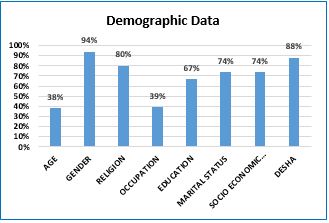An observational study to explore the Samprapti Ghatakas in Hypothyroidism
DOI:
https://doi.org/10.21760/jaims.7.6.10Keywords:
Hypothyroidism, Agni, Dosha, Dushya, Srotas, Sroto Dushti, AmaAbstract
Background: Hypothyroidism is the most common functional disorder of the thyroid gland. It is a hypometabolic clinical state resulting from inadequate production of thyroid hormones for prolonged periods. The prevalence of this disease in India is 6% and more than 10 million cases per year are reported. It is a multisystemic disorder which has a wide range of clinical symptoms. This condition is not mentioned in Ayurveda classics by any specified name. In Ayurveda, determining the elements that contribute to Samprapti is essential in developing a treatment plan. Hence, the current study attempts to evaluate the Samprapti Ghatakas and as a result, formulate probable Samprapti. Objectives: To study and explore the Samprapti Ghatakas of hypothyroidism and to propose possible Samprapti. Methods: The study was conducted in 100 cases of hypothyroidism between the age of 16 to 70 years. A case proforma was prepared which includes history taking, physical signs and symptoms and required examination. The calculations were done in Microsoft excel and the values obtained were assessed on the basis of percentage of individual parameters in relation with Samprapti Ghatakas of hypothyroidism. Results: Kapha and Vata are the main Doshas involved in the Samprapti. Important Dooshyas are Rasa, Meda. Agni involved is Dhatwagni and the disease is caused primarily due to Dhatwagnimandya. Udakavaha, Annavaha, Medovaha, Swedavaha, Purishavaha, Rasavaha are the main Srotas involved with Sanga type of Srotodushti. Udbhava Sthana can be considered as Amashaya; Sanchara Sthana, Vyakta Sthana and Adhishtana is Sarva Shareera. All the three Rogamarga are involved.
Downloads
References
Munjal YP. API Textbook of Medicine. Tenth ed. New Delhi: Jaypee Brothers Medical Publishers; 2015. Volume 1.p. 566.
Harsh mohan. Textbook of Pathology. Sixth ed. New Delhi: Jaypee Brothers Medical Publishers; 2010.p.803.
www.theweek.in.thyroiddisorders
Colledge R Nicki, Walker R Brian, Ralston H Stuart. Davidson’s Principles and Practice of Medicine. Twenty first ed. Elsevier Health Sciences; 2010.p.741.
Vaidya Jadavji Trikamji Acharya, Charaka Samhita by Agnivesa with Ayurveda Dipika Commentary of Cakrapanidatta, Sutra Sthana; Chapter 21, Verse 3. Varanasi: Chaukambha Krishnadas Academy, 2015; p.116.
Fauci AS, Kasper DL, Hauser SL, Jameson JL, Loscalzo J. Harrison’s Principles of Internal Medicine. Sixteenth ed. New York: McGraw-Hill Medical Publishing Division; 2005.Volume II.p.2109.















